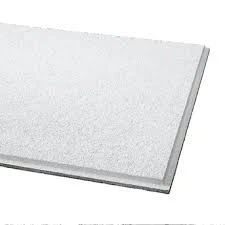Oct . 02, 2024 05:58 Back to list
Metal Drywall Ceiling Grid Solutions for Enhanced Aesthetics and Durability in Interior Spaces
Understanding Metal Drywall Ceiling Grids A Comprehensive Overview
Metal drywall ceiling grids have become an essential component in modern construction and interior design, offering versatility, durability, and aesthetic appeal. These grids serve as a framework for suspended ceilings, supporting the drywall panels and creating a clean, seamless look that enhances any space.
One of the primary advantages of metal ceiling grids is their strength. Made from steel or aluminum, these grids provide superior support compared to traditional wooden frameworks. This robustness ensures that the ceiling can withstand the rigors of daily use, making it an ideal choice for various environments, including commercial buildings, offices, and residential homes. Additionally, metal grids are resistant to warping and moisture damage, which often plagues wooden materials, enhancing the longevity of the ceiling system.
Installation of a metal drywall ceiling grid is typically straightforward, which is one of the reasons for its growing popularity among contractors and builders. The grid system consists of main runners and cross tees that easily interlock to form a sturdy structure. By following a predetermined plan, contractors can quickly assemble the grid, ensuring precise spacing and alignment for subsequent drywall installation. This efficiency not only reduces labor costs but also minimizes disruption during construction.
metal drywall ceiling grid

Moreover, metal ceiling grids provide excellent design flexibility. They can accommodate various ceiling heights and allow for integration with other systems such as lighting, HVAC, and soundproofing. The grid's design can be customized with different finishes, colors, and styles to match the overall aesthetic of the building. This adaptability makes metal grids a preferred choice for architects and designers looking to achieve a specific look or functionality.
Another significant benefit of metal drywall ceiling grids is their contribution to improved acoustics. The space between the grid and the existing ceiling can be filled with acoustic insulation materials, allowing for better sound absorption and noise reduction. This feature is particularly advantageous in environments such as offices and educational institutions, where noise control is critical.
In addition to their functional benefits, metal ceiling grids also facilitate easier maintenance. Access panels can be integrated into the design, allowing for quick access to electrical and plumbing systems hidden above the ceiling. This convenience makes repairs and upgrades simpler, ensuring that building maintenance is less of an operational burden.
In conclusion, metal drywall ceiling grids offer a robust, versatile, and aesthetically pleasing solution for modern construction projects. With their strength, ease of installation, design flexibility, and maintenance advantages, it's no wonder they are becoming the preferred choice for builders and designers alike. As construction trends evolve, metal ceiling grids will undoubtedly continue to play a vital role in creating functional and stylish spaces.
-
Quality Ceiling Trap Doors & Access Panels | Easy & Secure AccessNewsAug.30,2025
-
Durable Ceiling T Grid Systems | Easy InstallationNewsAug.29,2025
-
PVC Gypsum Ceiling: Durable, Laminated Tiles for Modern SpacesNewsAug.28,2025
-
Pvc Gypsum Ceiling Is DurableNewsAug.21,2025
-
Mineral Fiber Board Is DurableNewsAug.21,2025
-
Ceiling Tile Clip Reusable DesignNewsAug.21,2025







